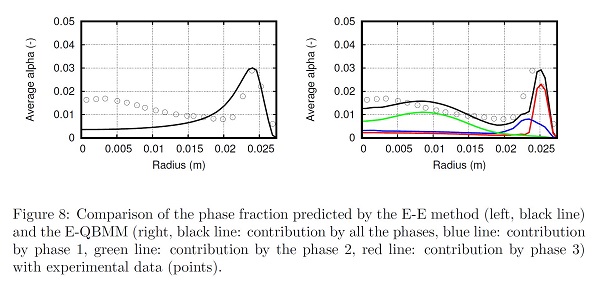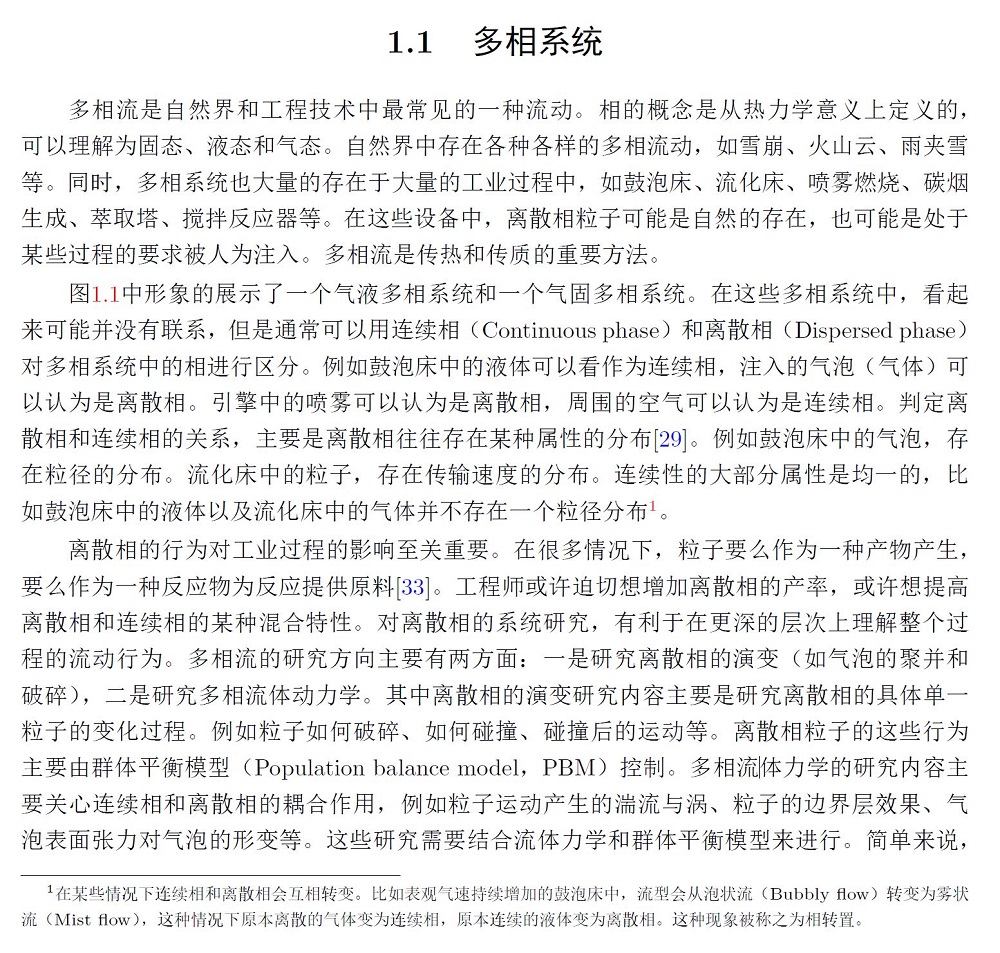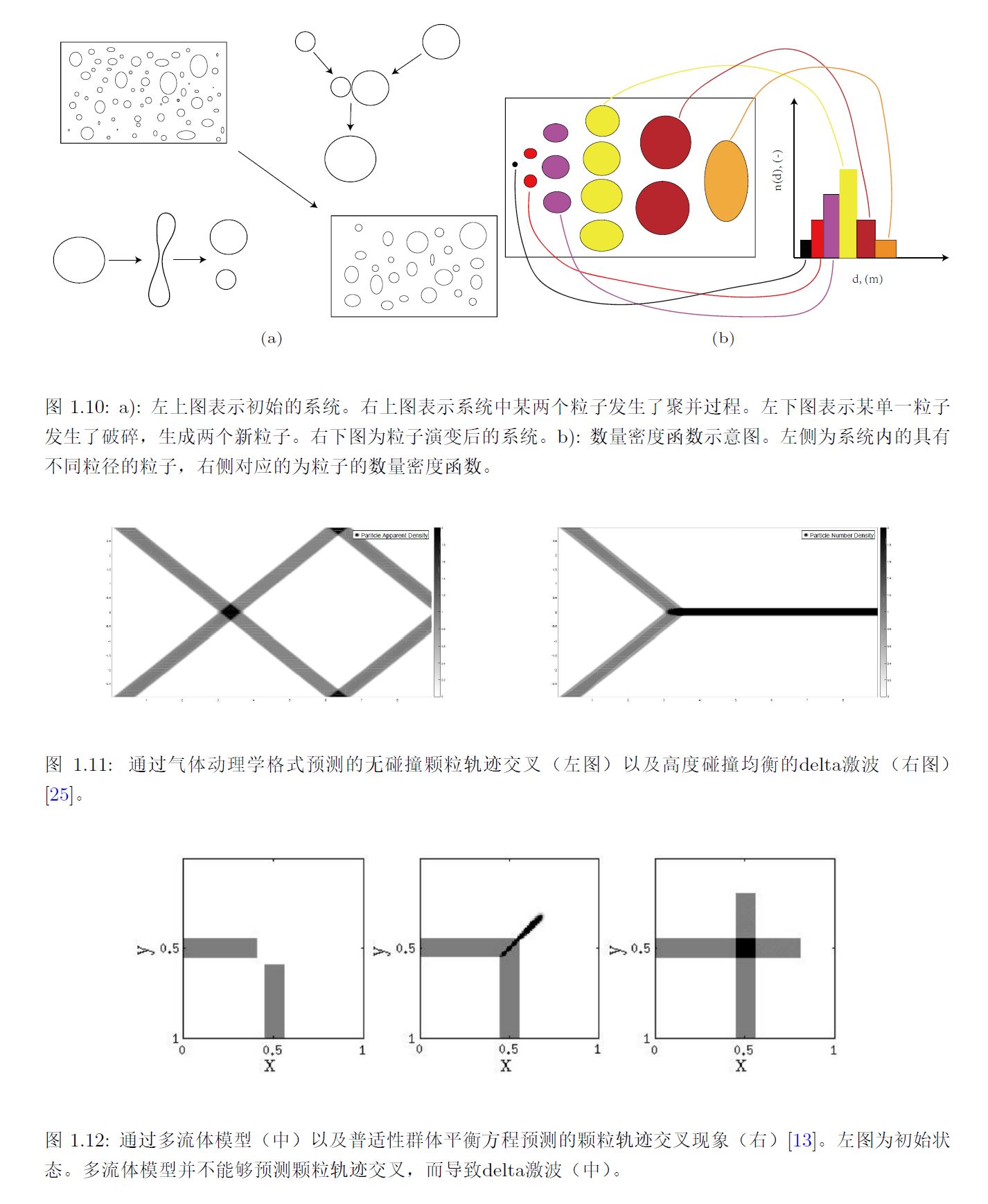多相体系的计算模拟
-
已完成的工作(博士)
各位OpenFOAM战友们,
在这里很高兴跟大家分享一篇我们的工作:Droplet breakage and coalescence in liquid–liquid dispersions: Comparison of different kernels with EQMOM and QMOM。在这篇文章中,我们将QMOM和EQMOM植入到OpenFOAM的双流体模型中,并用于预测搅拌反应器内的液液混合粒径分布。并将相关数据和实验进行验证结果吻合较好。希望这个工作对相关的研究起到一定的启发作用。
这个工作是我在意大利期间,在其他导师大力指导下完成的,多亏各位导师开启了我的CFD篇章!心里已经谢了一万遍!

https://www.jianguoyun.com/p/DRta4iIQ9s3ZBhiH4H8
基本完成的工作(博后)
博士期间的工作进行的时候,我们发现了一些缺陷。于是,我们计划在OpenFOAM中植入了一种新的算法,在这个算法中,离散相通过普适性群体平衡模型计算,也就意味着传统欧拉欧拉模型中的离散相N-S方程可以被彻底的抛弃。我们已经将相关的模拟数据和实验结果相对比进行验证。相关的代码已开源。
这个工作主要是我在德国博后期间做的。但是回国的时候还没做完,回国后在业余时间继续干了半年多。博士后不同于博士,相关工作大部分独立完成,合作导师掌握了一些方向
 也建议大家博后期间一定要培养起独立科研的能力,不能处处需要人指导。万一你青年千人回来独立成立课题组呢
也建议大家博后期间一定要培养起独立科研的能力,不能处处需要人指导。万一你青年千人回来独立成立课题组呢
下面是一篇在审文章的结论:
Conclusions: Multiphase flows can be simulated using the E-E method, the E-L method and the Eulerian-QBMM. In this work, the one-way coupled solver oneWayGPBEFoam and the two-way coupled solver twoWayGPBEFoam have been developed, in which the Eulerian-QBMM was implemented. The latter is designed entirely within the OpenFOAM software framework and is a highly-extensible and fully object-oriented C++ based approach. The code is released under the same license as the OpenFOAM base, at a publicly available software repository that includes documentation and example tutorials. It is intended to be a powerful research platform for those interested in Eulerian-QBMM.
oneWayGPBEFoam has been used in this work to verify the particle size segregation phenomenon, and good agreement with the analytical solutions was obtained, implying that the QBMM algorithm which was implemented is correct. A turbulent bubbly air/water upward flow through a pipe with a sudden enlargement was employed to verify the results predicted by the two-way coupled Eulerian-QBMM and the E-E method. Both of them predict good results compared with the experimental data. To complete the two-way verifications, two classic bubble column experiments with different superficial velocities were employed, as used by D{'\i}az et al. \cite{diaz2008numerical} and Pfleger et al. \cite{pfleger1999hydrodynamic}. It was shown that the results predicted by twoWayGPBEFoam (e.g., the bubble plume period, the global phase fraction and the averaged vertical liquid velocity) agree well with the experimental data.
The development of twoWayGPBEFoam is still ongoing. Other momentum interface exchange models, four-way coupling procedures and compressibility algorithms will be implemented in the future. Optimizations and bug fixes are often applied to the repository. It is also worth mentioning that besides twoWayGPBEFoam readers are also refereed to the open-source code (\verb+OpenQBMM+) developed by Passalacqua et al. \cite{passalacqua2018open}, which includes different QBMM algorithms and well-organized test cases, although the two-way coupling procedure used in their work is different to ours. It is our hope that these open-source QBMM-based CFD codes, as strong supplements of the existing E-E method and E-L method, will be used and be extended by different research and industrial groups from different disciplines.

即将进行的工作
博后期间将气-液体系将E-QBMM算法验证之后,在未来,我将和新的小伙伴们将E-QBMM应用于液-液/液-固体系。相关研究将实验 + 模拟两步走。具体的研究暂时保密。同时,在双向耦合的基础上植入四向耦合OpenFOAM求解器。相关的算法将和欧拉欧拉求解器
reactingMultiPhaseEulerFoam以及MPPIC求解器MPPICFoam进行对比验证。从博士期间发现问题,博后期间植入新算法并验证,未来继续验证,整个算法的开发/植入/验证的过程,基本人生的10年就过去了。不过工作很具有系统性、连续性和创新性!再一次的,我们承诺将所有这些OpenFOAM求解器以及所有的验证算例开源化,以供同行交流!
对了,有对多相流算法感兴趣的,可以回帖交流讨论!
祝收敛
东岳
另外,我计划2年内完成这本在线笔记,名为《多相流及群体平衡模型的数值计算方法》。还是只能用业余时间写。还是要从算法的层次往上升,希望能讲清楚,讲明白!


